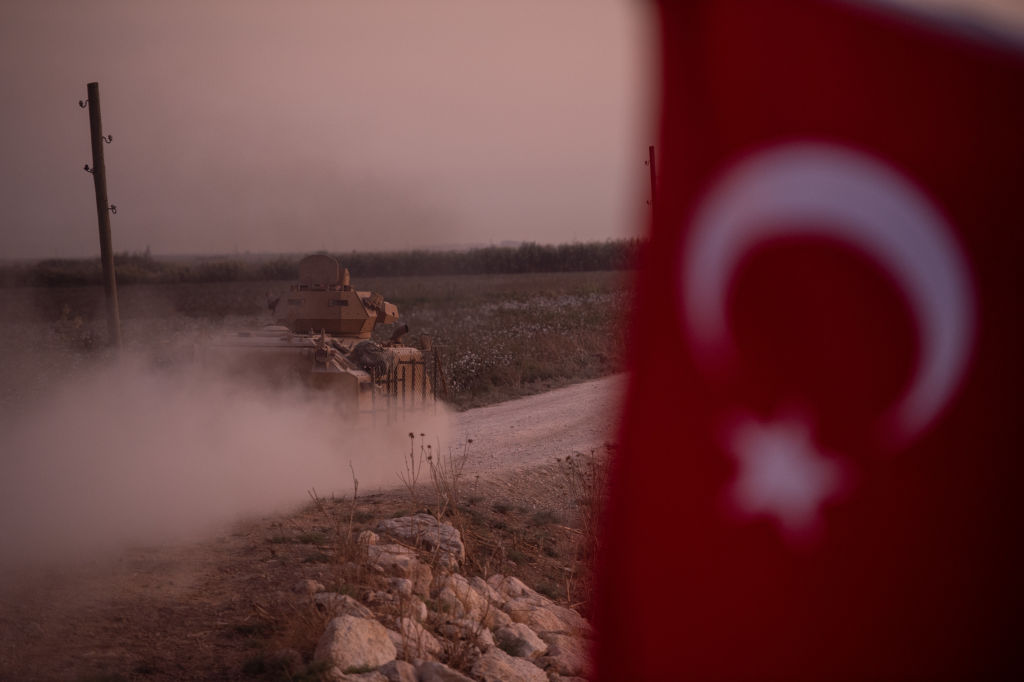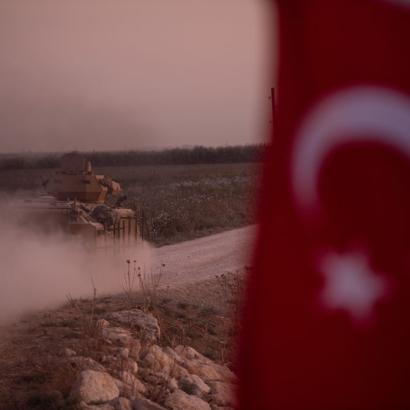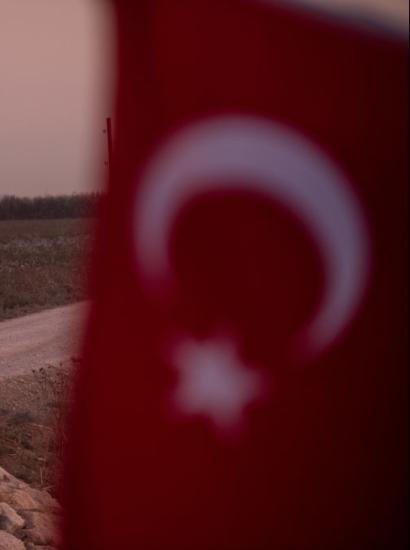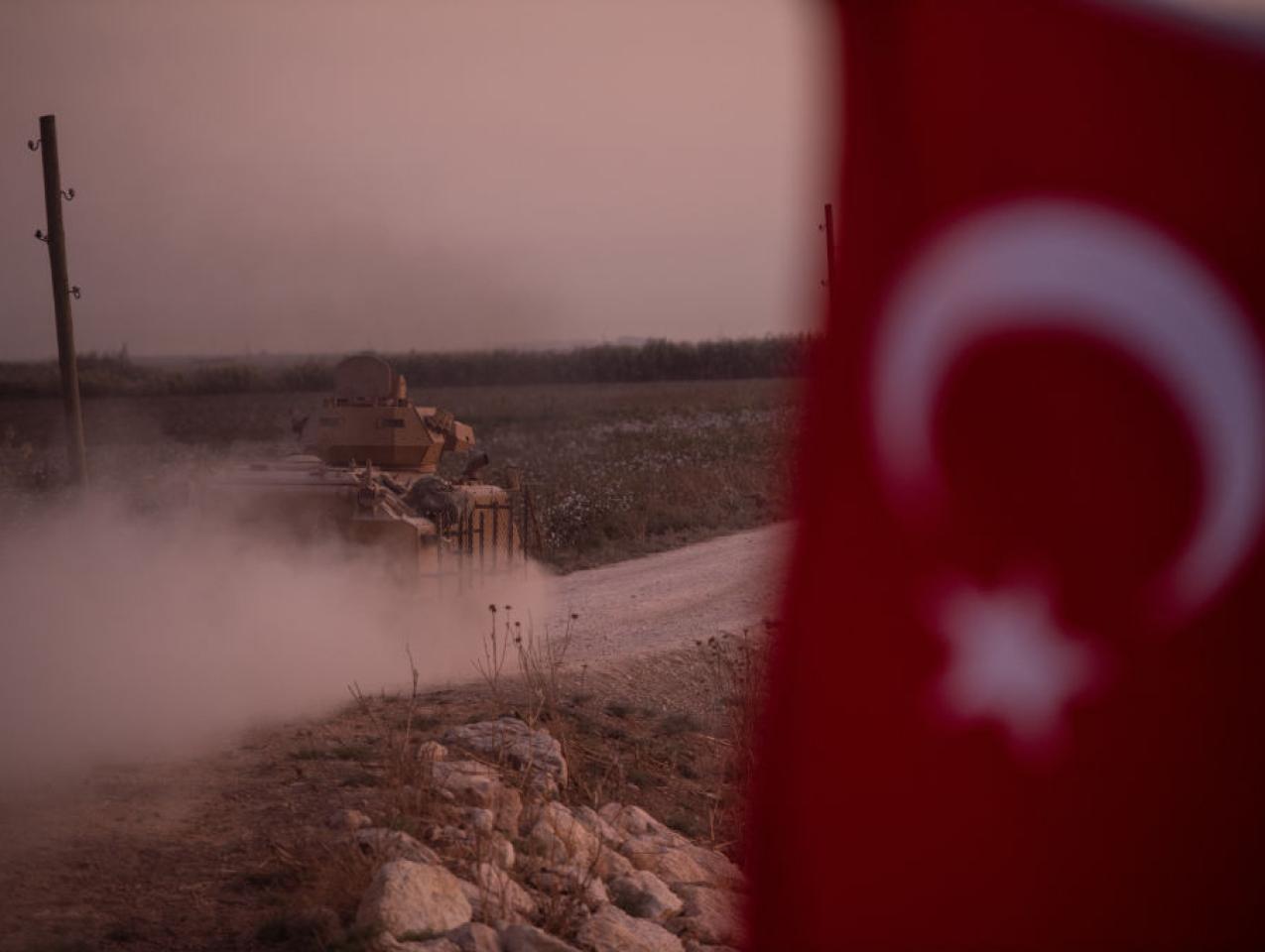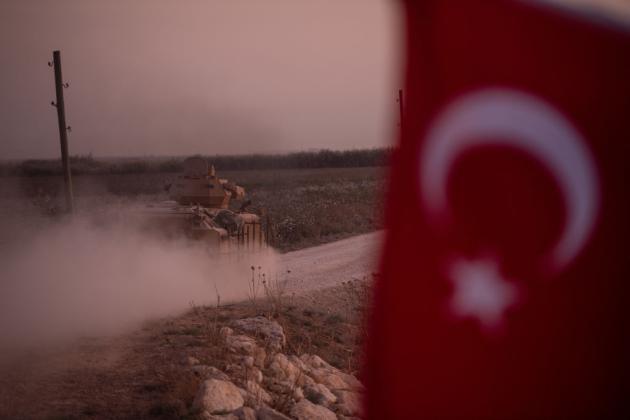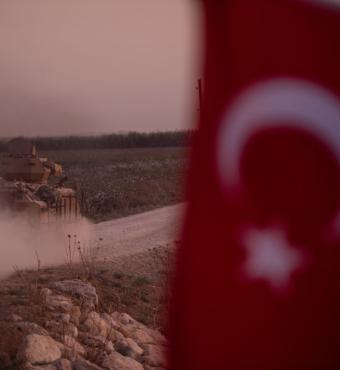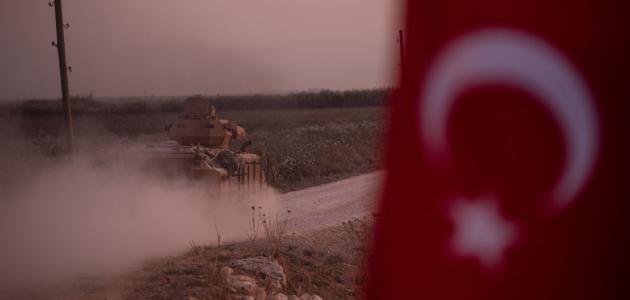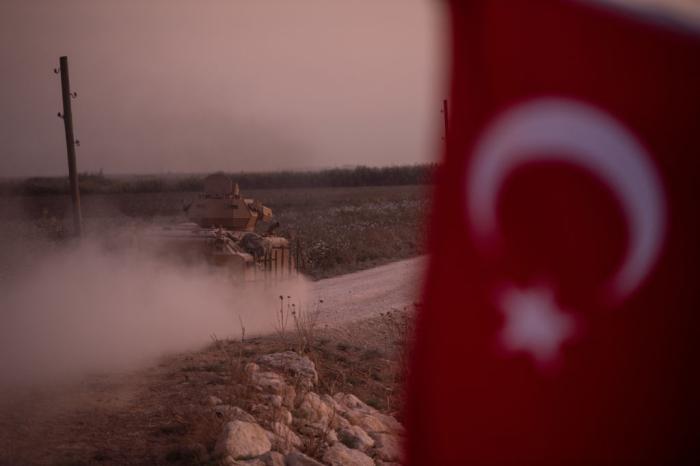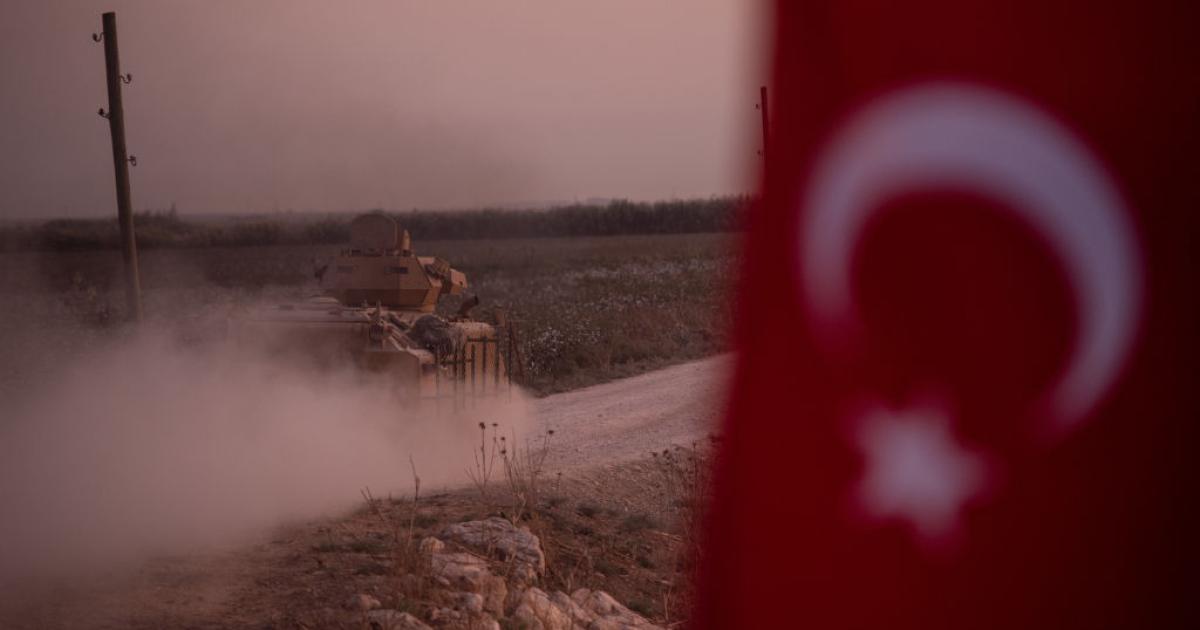In the remainder of 2022 many Middle East watchers expect a major Turkish military operation in northern Syria, the fifth in seven years. President Recep Tayip Erdogan assured the parliamentary bloc of his ruling AKP party in June that two sensitive cities near the Turkish border - Manbij and Tel Rifaat - will be cleared of fighters from the YPG, the Syrian branch of a designated Foreign Terror Organization known as the Kurdish Workers’ Party, or PKK. YPG forces will be bolstered by Iranian-supported militias and units from Bashar al-Assad’s Syrian Arab Army, while the Turkish military will fight alongside the Syrian National Army, remnants of the anti-Assad opposition supported by Ankara.
The proposed operation has prompted warnings from Washington, as did previous Turkish anti-YPG operations, because the YPG remains the primary U.S. tool in its campaign against Islamic State militants in eastern Syria. Yet President Erdogan seems committed, and he has fulfilled similar promises on four previous occasions. The July 19th three-way Tehran summit between Putin, Erdogan, and Reisi may have delayed the operation, given reluctance from the Russian and Iranian leaders, but Erdogan’s words leaving the summit reinforced his intention to act, and he pressed Putin further on the matter in an August 5th meeting in Sochi.
Reductionist explanations attribute Erdogan’s insistence on unilateral action to nationalist vote-seeking and as a distraction from severe economic problems. These are not wholly wrong, but there is more to the story. Erdogan and Turkish strategists in and out of government consistently cite a geopolitical logic rooted in two key concepts - a terror corridor and a Safe Zone - to justify operations against the YPG within 30 kilometers of the Turkey-Syria border. Understanding that logic is key to understanding why a Turkish operation is more or less a certainty.
The Terror Corridor
Terror Corridor is the term Ankara uses to describe areas controlled by the YPG and associated political elements as the “Autonomous Administration of Northeast Syria” or AANES. As the YPG leveraged U.S. air, logistical, and training support to drive Islamic State forces out of northern Syria in 2014-2019, it established local councils discretely supervised by PKK ideological minders (kadros) and tied them to an AANES senior council dominated by the PYD, the political arm of the YPG. The presence of the kadros, with oversight functions exercised by the PKK Central Committee in Iraq, and the presence of non-Syrian foreign fighters among the YPG convinced Turkey, and many local Arabs, that the AANES was light cover for PKK domination of northern Syria. In fact, the YPG and PYD have always been seamless components of the broader PKK movement, which is rooted in opposition to the Turkish state.
The AANES has included predominantly Kurdish areas such as Kobane and Afrin, but also majority Arab areas such as Qamishli, Raqqa, Tel Abyad, Tel Rifaat, and Manbij. The imposition of YPG rule in Arab districts along the Turkish border posed a direct threat to Turkish security, and angered Arabs in those districts and in Turkey. This has led to increasing Arab resistance to YPG and PYD control, and impelled Ankara to eject the YPG from several “cantons” of the SNES, including Afrin (Operation Olive Branch 2018), Tel Abyad and Ras al-Ayn (Operation Peace Spring 2019).
Manbij is a special case. To gain Turkish acquiescence to a U.S.-supported military operation along the Turkish border then-Vice President Biden assured Ankara in 2016 that YPG forces would return east of the Euphrates after driving ISIS out of Manbij - but they never left. The U.S. later negotiated a roadmap to reduce YPG/PKK presence in the town, which was never implemented. The Turks, accordingly, feel doubly deceived by the U.S. on Manbij. Tel Rifaat is perhaps more galling to both Ankara and its Syrian allies; after liberating part of the town from Islamic State militants with Russian help in early 2016, the YPG drove out the anti-Assad opposition later in 2016. YPG forces also helped Assad seal the fate of opposition forces in Aleppo that year, and paraded dead opposition fighters on trucks in nearby Ayn Daqna. The anti-Assad opposition has forgotten none of this.
The Turks view YPG control of sensitive areas in the north as a terror corridor not only because of administrative, personnel, and ideological links of YPG and SNES to the PKK, but because those areas are used as launching points for Turkey and into the opposition-controlled, Turkish supported zones in northern Syria.
The Safe Zone
Previous Turkish military operations thwarted YPG control of the entire Turkey-Syria border. The terror corridor is thus truncated and attenuated as a threat to the Turks and their Syrian allies. The work of Ankara’s second geopolitical purpose, the Safe Zone, remains less complete.
The Safe Zone has been a central concept of Turkish Syria policy for a decade. It entails a 30-kilometer deep zone across all of northern Syria to protect anti-Assad areas from regime retribution, prevent further refugee flows into Turkey and Europe, enable delivery of humanitarian assistance to millions of vulnerable Syrians near the border, to keep the armed and political opposition intact - and to keep the PKK out. After appealing to the U.S. and others to help establish such a zone, Ankara acted unilaterally to begin constructing it with Operation Euphrates Shield in 2016. Subsequent operations have aimed to expand and protect the zone. Whatever the outcome of next year’s Turkish elections, national policy almost certainly will maintain the Safe Zone until a full and formal peace deal ends the war in Syria.
Adding Tel Rifaat and Manbij to the Safe Zone would add large urban areas with Arab majorities, strategic locations, and important resources. The Zone would thereby gain better defensive terrain and more room for refugee returns. Yet these towns and the Safe Zone more generally cannot be “safe” for both the YPG and for the majority-Arab Syrian opposition, given the YPG’s longstanding alliance with the Assad regime. The conundrum for U.S. policy is that the YPG is fighting a war entirely separate from the Islamic State campaign - a war against the Turkish Safe Zone. In light of the narrow U.S. mandate in Syria - fighting ISIS - the U.S. cannot actively support the YPG in this separate war; it can only counsel restraint and status quo.
U.S. Sensitivities and Response
The U.S. government naturally avoids the terms “terror corridor” or Safe Zone. To concede the term “terror corridor” would undermine the political fictions that the YPG is not a PKK affiliate and is not fighting its own war in Syria apart from ISIS. As for “Safe Zone,” Western observers have noted that the Zone is far from entirely safe, that terror groups still have a presence in places, and that humanitarian abuses occur alongside more laudable humanitarian relief activities.
If the Turks decide to expand their Zone, the U.S. lacks clear political or military leverage to “green light” or “red light” the operation. Washington can warn that any threat to U.S. forces might trigger defensive escalation, but previous Turkish operations have made clear a desire to avoid U.S. forces and a willingness to coordinate protective measures. Predictions that YPG losses along the border might lead to the collapse of counter-Islamic State operations have not been borne out. YPG forces west of the Euphrates operate in conjunction with Assad’s military and Iran-backed militias routinely, and are not directly supporting the U.S. mission against ISIS. The impact of any new operation on U.S. forces or counter-ISIS operations will therefore remain limited, as long as the Turkish operation does.
A firestorm of DC-based criticism, as occurred during Operation Peace Spring in 2019, may recur nonetheless. Yet much of that firestorm was tied to President Trump’s intent, later changed, to withdraw U.S. troops entirely from Syria, leading to fears of “abandoning the Kurds.” If a new operation targets the Assad-aligned YPG west of the Euphrates, criticism will likely be more muted this time around. The war in Ukraine, NATO accession for Sweden and Finland, and reconciliation between Turkey and other U.S. allies in the Mideast also make a major bilateral rupture less likely. One cost may be the proposed sale of F-16s to Turkey that is currently stalled in Congress, yet Congress has shown no inclination to approve that sale anyway.
Constrained Policy Options
Even if Syria were a top policy priority for the Biden Administration, thorny policy questions defy quick resolution. Is the ISIS threat in eastern Syria sufficient to justify continued U.S. boots on the ground? Whither the anti-Assad opposition? If the West can neither dislodge nor forgive Assad, how long does the stalemate last? How does the territorial division of Syria among Assad, Iranian militias, Turkish-backed forces, and the U.S.-backed YPG resolve?
Syria is nowhere near the priority for an Administration fully occupied with Ukraine, inflation, energy, climate, and mid-terms. No comprehensive Biden policy for Syria is in the works. Any Turkish operation will generate a menu of response options developed by the interagency, but with severe leverage limitations discussed above.
The likely U.S. response will be to mirror the response to Operation Peace Spring in 2019: high-level engagement focused on moderating and delimiting the Turkish operation. This means setting geographic limits to avoid population displacements, demanding discipline among Syrian National Army forces to avoid war crimes or excesses, and a speedy conclusion of operations. That approach sketched the outlines of a mutually acceptable outcome in 2019. Other conceptual options - deterring Ankara by force, collaborating with Damascus and Tehran to protect the YPG west of the Euphrates, or doing nothing - have less to recommend them.
The Turkish campaign to prevent a terror corridor and consolidate the Safe Zone seems certain to continue until one of three things occurs: the zone is complete, there is a comprehensive and internationally supported peace agreement, or Ankara and Damascus reach a bilateral understanding that protects Turkish interests in another way. Given the limits of U.S. ability to deter or punish this campaign, steps toward completion of the zone seem most likely.







